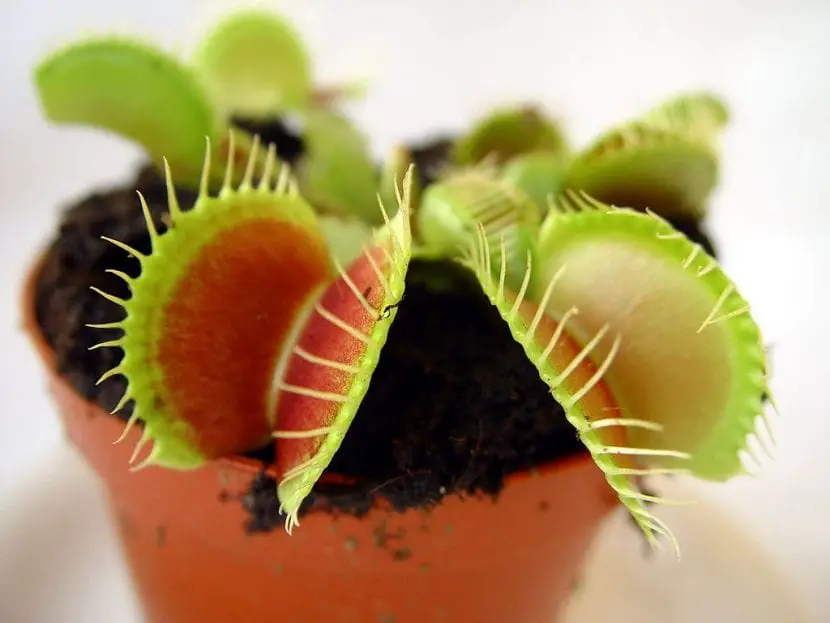
Dionaea muscipula
Carnivorous plants are often thought to be very difficult to maintain, and the truth is that it is not as well as we think. The truth is that they need special carebut once we know what they are, it will be easy for us to have perfectly healthy specimens.
If you just got one and you have no idea what to do with it, let us help you. Read on to know what are the basic care of carnivorous plants.

sundew madagascariensis
Carnivorous plants are one of those that attract the most attention, especially the Dioneia muscipula for its amazing mouth-shaped traps. Therefore, it is easy that more than once and twice we end up buying one. However, it is very important to know their basic needs to prevent them from getting sick, and one of the main ones is the light. They do not grow well in shady places, so they have to be put in a very bright area but without direct sunexcept for the Sarracenia and Dionaea. These two must be directly exposed to the star king, otherwise they will not grow well.
Another important issue is the substratum. Conventional substrates based on black peat or mulch are not suitable for them. It is advisable to mix equal parts blond peat with perlite, or plant them in coconut fiber. The reason is the pH: both peat moss and coconut fiber have it very low (from 4 to 6), which is exactly what carnivores need. Too high a pH would lead to burn the roots. The earth must remain humid, and for this it will be watered from below (filling a saucer or tray) it will use rainwater, without lime or distilled.

sarracenia minor
Although there are species that are small and it is not necessary to change pot, all of them must be transplanted at least once, in spring. They should be planted in plastic pots that are about 2cm wider than the previous onewith the substrate that we mentioned before. Sarracenia, as they grow quite fast and can reach a size of up to 1m or more, the pot must be changed every 1-2 years.
Act quickly. remove dead leaves / traps and flowers to avoid the proliferation of fungi. In addition, this will make them look much prettier .
Finally, they have to be protected from frost. The Sarracenia and the Dionaea have to hibernate, and they do this by being outside in an area where during the winter the temperature drops to 3ºC, but the others are very cold and have to be protected inside the house.
Enjoy your carnivores.

3 thoughts on “Basic care of carnivorous plants”